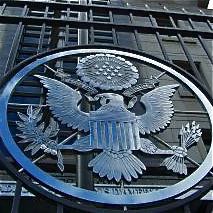 If you watched The Early Show on CBS last week, you heard my piece on preparing for disaster.
If you watched The Early Show on CBS last week, you heard my piece on preparing for disaster.
If you’re traveling and disaster strikes — an earthquake, a hurricane, a political insurrection, a war, a flood — what do you do?
The best thing you can do is laminate. That’s right. Laminate.
Laminate your itinerary, passport copy and all your contact lists, because if there’s a flood, you’ve lost it. Also, laminate your prescription. Not just the brand name, but the generic name. Because when you’re overseas, they may not recognize the brand name.
Here’s one that people don’t often think about. I always pack duct tape because it fixes everything. Also, a flashlight with two extra batteries already charged; and a cell phone, with two other batteries already charged, because if the electricity goes out, you’re out.
 And last but not least, the one that got a little controversial, but I’m going say it again. If the you-know-what hits the fan, and you’re overseas, the absolute last place I would ever go is the U.S. Embassy. Want to know why? It’s the first place that shuts down and bunkers in, and the Marines won’t even let in their own citizens.
And last but not least, the one that got a little controversial, but I’m going say it again. If the you-know-what hits the fan, and you’re overseas, the absolute last place I would ever go is the U.S. Embassy. Want to know why? It’s the first place that shuts down and bunkers in, and the Marines won’t even let in their own citizens.
You know where I go instead? The Canadian Embassy because they’re the coolest guys in school. They’re happy to see you, they’ll take care of you. And any time I go what is called a hardship destination in the middle of a war, or just a hardship place, I head for the Canadian, the British or the Australian embassies.
I’m sorry, I know I’m an American citizen, but the last place I would ever go is the U.S. Embassy. They’re protecting their own interests, not yours. Now if you have to get your passport renewed, or extra pages in your passport, go stand in line at the U.S. Embassy. If the you-know-what hits the fan you won’t see me there.
For more, check out the segment: Dealing With Disasters When You Travel.
 Another item in the news we talked about on The Early Show this week was what they called a “near miss” which was actually a “near hit” between the United Airlines 777 and a small plane on takeoff over San Francisco.
Another item in the news we talked about on The Early Show this week was what they called a “near miss” which was actually a “near hit” between the United Airlines 777 and a small plane on takeoff over San Francisco.
The United Airlines 777 headed for Beijing was at about 1,100 feet and the pilot had just retracted the landing gear, when the air traffic controllers called out traffic at 1 o’clock.
Now air traffic controllers, to be fair, do a great job of calling out traffic to pilots. In fact, they call out traffic to pilots all the time because there’s so much congestion in the north-south quarter between L.A. and San Francisco. Pilots need to be seen and see and that’s how they fly, under “see and be seen” rules.
Check out more of Peter’s previous segments on The Early Show here.
What was abnormal in this situation was that it was so close, and in what we call a “Terminal Control Area.” For those of us who have a sense of history, let me give you a date that you probably don’t remember but I do because I was there: September 25, 1978.
 That was when a small plane smashed into a Pacific Southwest 727 on approach into San Diego’s Lindbergh Field. Everybody died.
That was when a small plane smashed into a Pacific Southwest 727 on approach into San Diego’s Lindbergh Field. Everybody died.
That was the wake-up call for the FAA to issue new rules on Terminal Control Areas, otherwise known as TCAs. That is a piece of real estate around and above an airport in which nothing can travel in there unless it is under the positive control of air traffic controllers.
So what this plane was doing at 1,100 feet coming within 300 feet of United Airlines’ 777? There’s a problem there, and it might just be that the FAA might want to expand that diameter of the TCA in certain heavily congested airports.
Do you remember the Yankee pitcher Corey Lisle who died when he flew his plane into a high-rise building in New York as he was going up the East River? The reason why he turned was because he was entering the TCA of LaGuardia.
Well, why do they not restrict all the air space over Manhattan? Are they nuts? The airspace over Manhattan at that point was only restricted above 78th street. But when he got to the 59th street bridge he realized he was going to hit 79th street pretty soon, and he had to start a left-hand turn. The problem was he was too close to the TCA to effect a left hand turn without hitting buildings.
And guess what? That’s exactly what happened. So let’s wake up. Lets expand those TCAs. This kind of stuff should not be happening either on approach or take-off. And certainly not at 1,100 feet.
By Peter Greenberg by PeterGreenberg.com.
Related links of PeterGreenberg.com:












